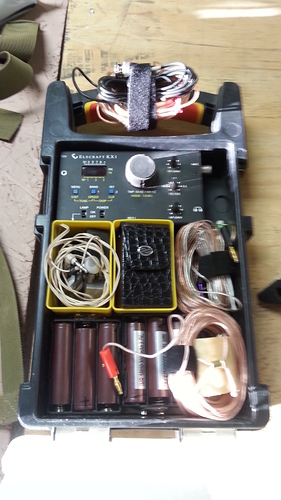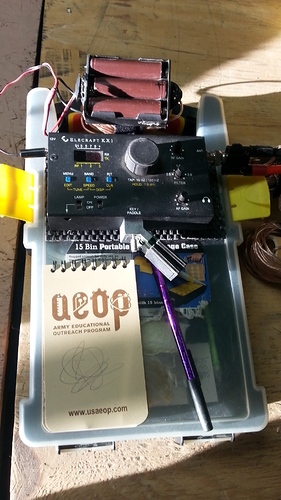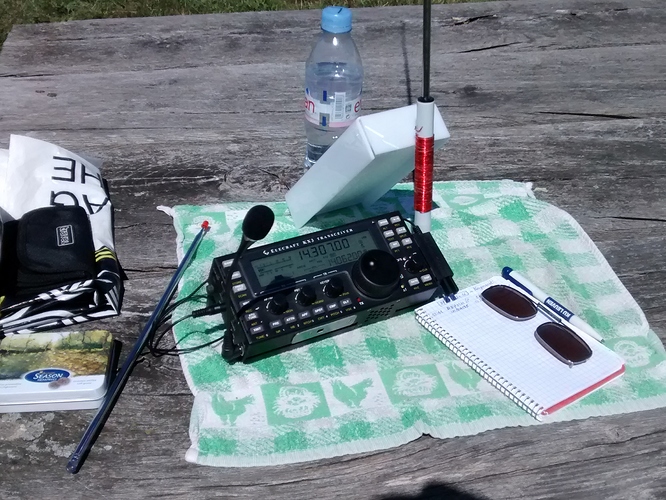Mike,
Bigger is better, and higher is too. 40 to 70 feet of #24 or #26 wire can take you much farther than you know yet.
We have a very effective tool to use for evaluating our SOTA antennas - the RBN (Reverse Beacon Network). Call CQ often during your activation, and use the RBN to get spots and see how many and how strong they are. Compare your signals to those of other activators - even if the truth hurts.
The KX1 is a capable rig, but it wants at least 12V to put out an effective signal. I have one running on 15V, and it puts out 5W and is OK with that.
The tall fishing poles are your best bet for supporting a wire with the least hassle. You’ll be amazed what a 5M or 6M pole will do! There is a learning curve, but good, consistent results will come. These poles are much lighter and more effective than all the other antennas you might think would work.
If you have trees on your summits, you don’t really need a pole - just learn to use a rock to throw a small cord into a tree. With practice, you can get one end of your wire up to 20 feet or more. If you have more patience, you can rig two supports for an inverted-L. The possibilities are endless, and the results will amaze you. You don’t need any feedline - but you will have to experiment to see what lengths of wire will work with your rig for each band. You may decide to make an antenna with links or jumpers to allow good performance on several bands.
A moderate counterpoise may improve your operation - 10 to 12 feet of wire is all you need, and then you experiment with your main wire(s) - it could be 30 to 70 feet long.
This is too large a subject to detail here, but the door is wide open - many combinations of wire and counterpoise will work efficiently. I’ve been amazed how many different combinations of end-fed wires will work on several bands with my homebrew tuners.
Since you’re using CW, the biggest challenge is already done. There’s no reason why you shouldn’t have regular SOTA activations with dozens of contacts, occasional DX contacts to EU, and nice reports. High mountains and low mountains make almost no difference, except for local contacts.
The key is to decide to have a stronger signal, do what’s required to do that, and then refine your techniques one activation at a time. Things will go wrong, sometimes trees and wind do bad things, but mostly you need to use what’s already on the mountain. Always put your priorities on light weight and convenient gear.
Although I generally use a cheap 6M telescoping fishing pole from China, I’ve done numerous activations with wires supported by trees, dead trees used as poles, or high rocks for supports - and 30-40 contacts on 3 or 4 bands, DX contacts, S2S, and big piles of chasers - using an ATS rig at 5W, and a homebrew tuner. I’ve often had to set up 40-50 feet below summits because of winds, but the results are there. You must get that wire up where the fields can radiate, you must use enough wire to present a reasonable impedance, and you must match the wire’s often complex impedance to your radio.
Don’t forget that you can do RBN tests anywhere outdoors that is OK to use for experiments - no need for an activation - just call CQ DE YOURCALL, and then go check the RBN on the internet.
Try to get many RBN spots, dozens per band, in 5 minutes - also try to get RBN reports of 10-30 db or more on days with good band conditions. Many of us do this most of the time, and we’re not carrying big rigs or fancy antennas.
This is the real truth about SOTA antennas.
73
George
KX0R


